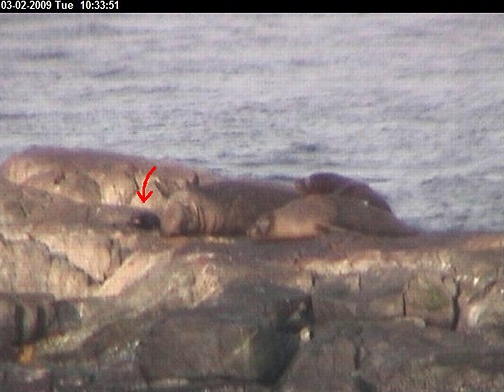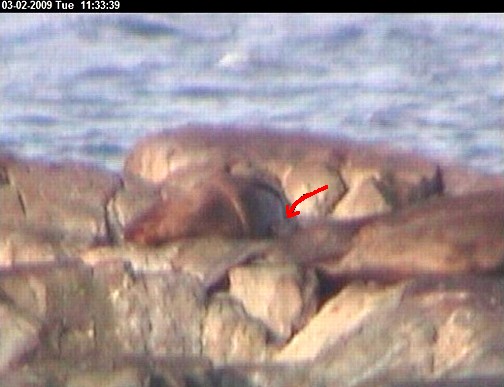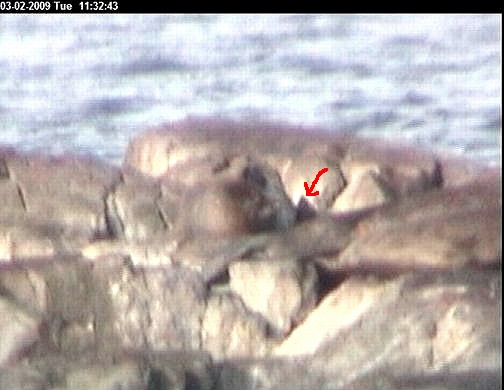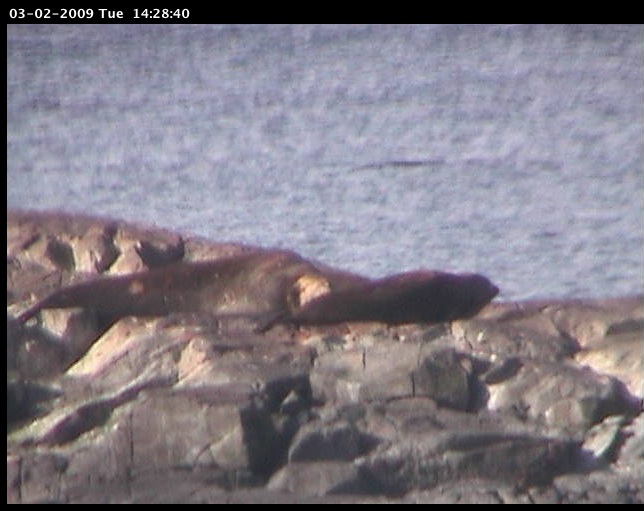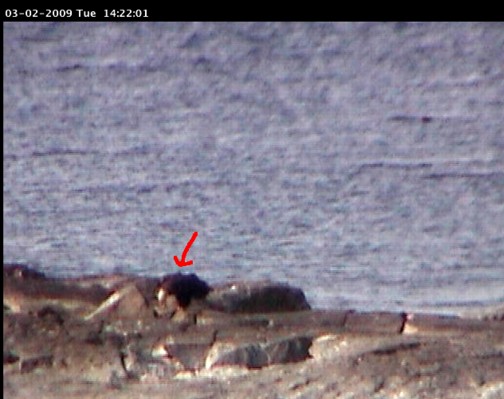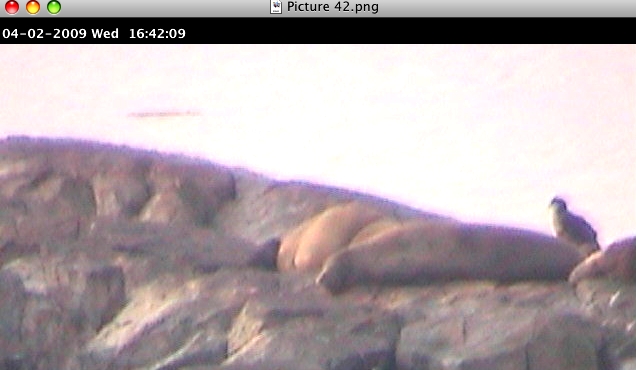|
||||||
Category Archives: Webcam Visitor Observations
Dunlins at Race Rocks
Pam Birley took some nice images of Dunlins at Race Rocks today. The location of Race Rocks Islands is important for migratory birds both fall and spring, and overwintering birds. See her Flickr site for more Dunlin photos.
See other dunlin posts here:
https://www.racerocks.ca/tag/dunlin/
Also one elephant seal male visible.
Forficula auricularia: Earwig –The Race Rocks Taxonomy
An interesting fact about these insect is that they are found on every continent except Antarctica. They have a pair of forceps-like pincers on their abdomen. Short folded wings or forewings give the scientific order name “skin wings”– Dermaptera
Domain Eukarya
Kingdom Animalia
Phylum Arthropoda
Sub-Phylum Hexapoda
Class Insecta
Sub-Class Pterygota
Order Dermaptera , (De Geer, 1773)
Family Forficulidae
Genus Forficula
Species auricularia
Common Name: European Earwig
| Other Members of the Phylum Arthropoda at Race Rocks |
and Image File |
 The Race Rocks taxonomy is a collaborative venture originally started with the Biology and Environmental Systems students of Lester Pearson College UWC. It now also has contributions added by Faculty, Staff, Volunteers and Observers on the remote control webcams. The Race Rocks taxonomy is a collaborative venture originally started with the Biology and Environmental Systems students of Lester Pearson College UWC. It now also has contributions added by Faculty, Staff, Volunteers and Observers on the remote control webcams.
Garry Fletcher |
Whimbrel visit and Baby Gulls
Whimbrel observed migrating through
Pam Birley from the UK submitted these images of a whimbrel from remote camera5
http://www.racerocks.com/racerock/eco/taxalab/2006/numeniusp/numeniusp.htm
Today two male elephant seals were photographed by Pam Birley on the remote camera:
See several pictures on her Flickr site
Also images of newly hatched glaucous-winged gull chicks hatched.
Phocoenoides dalli: Dall’s Porpoise–The Race Rocks Taxonomy
 Porpoises diving in the rip current just west of the main Island. Photos taken by Pam Birley on the remote camera 5 November 30, 2006
Porpoises diving in the rip current just west of the main Island. Photos taken by Pam Birley on the remote camera 5 November 30, 2006
Scientific classification
Kingdom: Animalia
Phylum: Chordata
Class: Mammalia
Order: Cetacea
Suborder: Odontoceti
Family: Phocoenidae
Genus: Phocoenoides
Species: P. dalli
Dall’s Porpoise
Other Members of the Class Mammalia at Race Rock
and Image File |
 The Race Rocks taxonomy is a collaborative venture originally started with the Biology and Environmental Systems students of Lester Pearson College UWC. It now also has contributions added by Faculty, Staff, Volunteers and Observers on the remote control webcams. Garry Fletcher 2006 The Race Rocks taxonomy is a collaborative venture originally started with the Biology and Environmental Systems students of Lester Pearson College UWC. It now also has contributions added by Faculty, Staff, Volunteers and Observers on the remote control webcams. Garry Fletcher 2006 |
Plectrophenax nivalis: Snow Bunting –The Race Rocks Taxonomy
Domain:Eukarya
Kingdom:Animalia
Phylum:Chordata
Sub-Phylum:Vertebrata
Class:Aves
Order:Passerifomes
Family:Emberizidae
Genus :Plectrophenax
Species::nivalis
Common Name: Snow Bunting
 |
 |
This is a very pale Snow Bunting . Snow Buntings are uncommon around Victoria and best seen in late fall-early winter, so any bunting in February is unusual. This is only the fourth Snow Bunting record for the Rocky Point Bird Observatory checklist. The first three images were taken in February 2005 using the remote camera 5. The last picture is a poor image through a blurry remote camera 5 housing, but the only one we have so far of a male snow bunting which was taken by PB in March 2007.
| This file is provided as part of a collaborative effort by the students,faculty and volunteers of Lester B. Pearson College |
Date:Feb 2006 | Pam Birley |
Bubo scandiacus: Snowy owl–The Race Rocks Taxonomy
Pam was interviewed recently about her wildlife viewing on racerocks.com ref: Anderson, Charlie, “Live Wildlife for your Living Room “,The Province (newspaper) , Vancouver, B.C. ( Sunday, Nov.21, 2004)
A comment from David Allinson of the Rocky Point Bird Observatory:
Pam Birley captured the pictures of this rare sighting at Race Rocks remotely on robotic camera 5.
“This is the second sighting of snowy owls at Race Rocks.The last historical record was almost exactly 40years ago when 7 birds were present on December 3, 1966 at Race Rocks.
I suspect there have been other records since, but they can easily be overlooked out there. We have no records for Rocky Point proper, but Race Rocks is in the checklist area. The bird appears to be an immature due to heavy barring. It is hard to be certain of its age/sex.
….. Note also that the AOU in 2003 announced a taxonomic change to Snowy Owl –it is now ‘Bubo scandiacus’ (was ‘Nyctea scandiaca’) as it is more closely related genetically to other owls in the ‘Bubo’ genus (e.g. Great Horned). The specific name is an adjective and changes to agree with the gender of the generic name.”
Pam Birley captured the pictures of this rare sighting at Race Rocks remotely on robotic camera 5.
Other Owl sightings at Race Rocks
Below are some of the images taken by ecoguardians in other years:
| Other Members of the Class Aves at Race Rocks |
and Image File |
 The Race Rocks taxonomy is a collaborative venture originally started with the Biology and Environmental Systems students of Lester Pearson College UWC. It now also has contributions added by Faculty, Staff, Volunteers and Observers on the remote control webcams. The Race Rocks taxonomy is a collaborative venture originally started with the Biology and Environmental Systems students of Lester Pearson College UWC. It now also has contributions added by Faculty, Staff, Volunteers and Observers on the remote control webcams.
name –year (PC) |
Calidris alpina: Dunlin–The Race Rocks Taxonomy

Dunlin, Calidris alpina … photo by Rod King March 18, 2021 ( click to see size comparison with a Canada Goose)
| Domain | Eukarya |
| Kingdom | Animalia |
| Phylum | Chordata |
| Sub-Phylum | Vertebrata |
| Class | Aves |
| Order | Charadriiformes |
| Family | Scolopacidae |
| Genus | Calidris |
| Species | alpina (Linnaeus, 1758) |
| Common Name: | Dunlin |
- Summer plumage from the video below
- Dunlin at a tidepool at Race Rocks. Note black patch on ventral area.Thanks to PB for capturing these images April, 2007.
- In April 24, 2007, we received these pictures and video for a shore bird identified as the Dunlin, Calidris alpina, which had just been photographed using the remote camera 5 at Race Rocks.
- Dunlin showed up at the freshwater pool again in January 2008. Note the winter plumage in contrast to the first three pictures showing breeding plumage here
- Thanks to PB for capturing these images on January 7, 2008.
The video shows the typical feeding pattern of the dunlin, probing the debris at the bottom of tidepools for crustaceans, insects and larvae.
 In this picture taken by Raisa Mirza in December 2011, you can compare the Dunlin in it’s winter plumage with the Black turnstone. They often feed together in the winter months around the tidepools and over the rain-saturated lawn areas.
In this picture taken by Raisa Mirza in December 2011, you can compare the Dunlin in it’s winter plumage with the Black turnstone. They often feed together in the winter months around the tidepools and over the rain-saturated lawn areas.
See other references on Dunlins posted on this website
Return to the Race Rocks Taxonomy
| This file is provided as part of a collaborative effort by a website observer, faculty, staff and students of Lester B. Pearson College | Date: Oct 2006 |
Pam Birley |

